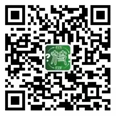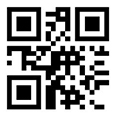
Acupuncture
Acupuncture refers to the practice of inserting needles (typically filiform needles) into specific points on the body at precise angles under the guidance of traditional Chinese medicine (TCM) theory. Through techniques like twisting, lifting, and thrusting, these needles stimulate specific body areas to achieve therapeutic effects. The insertion points are known as "acupoints" (or "shùxué" in Chinese). According to the latest TCM acupuncture textbooks, there are 361 classical acupoints along the body’s meridians.
Moxibustion involves burning prepared moxa cones or herbs over designated acupoints to apply heat stimulation for disease prevention and treatment. The most common material is wormwood, hence the term "moxibustion". Other methods include medicated moxibustion, willow stem moxibustion, rush-wick moxibustion, and mulberry branch moxibustion. In modern daily use, moxa stick moxibustion is the most prevalent.
Acupuncture and moxibustion, collectively forming one of the cornerstones of Eastern medicine, encompass theoretical principles, acupoint knowledge, techniques, and related tools. Their development, application, and evolution bear distinct cultural and regional characteristics rooted in Chinese civilization, representing a precious legacy born from China’s cultural and scientific traditions.
In 2006, the China Academy of Chinese Medical Sciences successfully nominated acupuncture and moxibustion for inclusion in the first batch of China’s National Intangible Cultural Heritage list, approved by the State Council. As of August 11, 2023, 20 countries have incorporated acupuncture into their national healthcare insurance systems.
Documentation
Acupuncture and moxibustion are methods of preventing and treating diseases through needle insertion and the application of heat. Acupuncture involves inserting metal needles into specific acupoints on the body and manipulating them to regulate nutritive Qi, defensive Qi, blood, and vital energy. Moxibustion uses ignited moxa rolls or cones to warm and stimulate the surface of acupoints, aiming to unblock meridians and harmonize Qi and blood. Together, they form the cornerstone of traditional Chinese medicine and represent a precious legacy of Chinese medical heritage.
Explanation
The term "acupuncture and moxibustion" collectively refers to TCM techniques for treating illnesses. Acupuncture employs specially crafted metal needles inserted into designated acupoints, with precise manual techniques to achieve therapeutic effects. Moxibustion applies burning moxa to warm acupoints, utilizing heat stimulation to treat diseases. These practices embody China's profound medical wisdom.
Source Texts
The Classic of Plain Questions: Treatise on Disease Capacity
"For those suffering from neck abscesses, some were cured by stone therapy, others by acupuncture and moxibustion."
Records of the Grand Historian: Biographies of Bian Que and Cang Gong
"Some ailments should not be treated with herbal decoctions, nor others with acupuncture and moxibustion."
Baopuzi: On Diligent Pursuits by Ge Hong, Jin Dynasty
"When afflicted by illness, they swiftly applied acupuncture and moxibustion."
Essentials of Governance from the Zhenguan Era: On Military Campaigns by Wu Jing, Tang Dynasty
"Emperor Taizong personally performed acupuncture and moxibustion when Li Daozong injured his foot in battle."
Classified Manuscripts of Guisi: On Sustaining Simplicity by Yu Zhengxie, Qing Dynasty
"The zong Qi, nutritive Qi, and defensive Qi are constants of life; beyond acupuncture and moxibustion, herbal formulas achieve balance."
Introduction
Acupuncture and moxibustion are distinctive Chinese therapeutic methods characterized by treating internal diseases through external interventions. This medical art leverages the conductive functions of meridians and acupoints, combined with specialized techniques, to address systemic ailments.
Clinical Practice
Following TCM diagnostic principles, practitioners first identify the root cause of disease, determine its nature, and localize its pathological manifestations to specific meridians and visceral systems. The condition is then categorized into patterns such as exterior vs. interior, heat vs. cold, or excess vs. deficiency. Based on this diagnosis, a tailored treatment plan is devised, selecting appropriate acupoints and techniques. By unblocking meridians, regulating Qi and blood, and restoring the balance of Yin and Yang, these methods harmonize visceral functions to achieve the goal of preventing and treating diseases.
Classification
Moxibustion Therapy
A therapeutic method that involves burning moxa wool or medicinal substances over specific acupoints on the body’s surface. The gentle heat of the moxa flame, combined with the medicinal properties, acts through the conductive functions of the meridians to warm and unblock Qi and blood, strengthen the body’s resistance, and expel pathogenic factors, thereby treating diseases and promoting preventive healthcare.
Other Needling Techniques
Three-edged needle technique, Dermal needle tapping, Intradermal needle embedding, Fire needle therapy, Long-needle technique, Electroacupuncture, Warm needle therapy, Catgut embedding therapy.
Cupping Therapy
A method that creates negative pressure within cups to adhere them to the skin’s surface for therapeutic effects. It is also called“suction cup therapy”or“cup pulling”. Cups made from animal horns historically are also termed “horns therapy”. Cupping induces localized congestion or stasis, promoting meridian unblocking, enhancing Qi and blood flow, and exerting effects such as activating circulation, relieving pain and swelling, dispelling cold-dampness, resolving toxins, and reducing fever.
Plum Blossom Needle Therapy
Also called dermal needle therapy, this technique uses a cluster of five or seven needles arranged in a plum blossom pattern to tap the skin, stimulating meridians and acupoints.
Moxibustion Subtypes
Moxa stick moxibustion includes gentle moxibustion, sparrow-pecking moxibustion, and warming moxibustion. Moxa cone moxibustion is divided into direct cone moxibustion and indirect moxibustion. Warm needle moxibustion combines acupuncture and moxibustion by attaching a moxa stick to the needle handle after insertion, allowing heat to transmit through the needle into the acupoint.
Modern Acupuncture and Moxibustion Techniques
Ear acupuncture, scalp acupuncture, eye acupuncture, hand acupuncture, foot acupuncture, wrist-ankle acupuncture.
Sound-wave electroacupuncture, electric fire needle, microwave acupuncture.
Laser acupoint irradiation, acupoint herbal patching, acupoint catgut embedding, magnetic therapy, acupoint injection, acupoint pressure, iontophoresis, acupoint cutting, acupoint ligation.
Fu's Subcutaneous Needling
Invented in 1996 by Fu Zhonghua through extensive experimentation, this method uses a specialized “disposable floating needle”to treat conditions like cervical spondylosis, lumbar disc herniation, myofascial pain, gastritis, urinary stones, and pelvic inflammation. It combines traditional Chinese medicine’s safety with modern medicine’s rapid efficacy, offering broad applicability, fast results, ease of use, cost-effectiveness, and minimal side effects. It is particularly impactful in pain management and complex internal disorders.
Characteristics
Acupuncture and moxibustion therapy is distinguished by its non-pharmacological approach to disease treatment. Instead of medication, it relies on inserting needles into specific body regions to stimulate nerves and elicit localized responses, or applying heat from burning moxa to warm targeted areas. The former is termed needling, while the latter is moxibustion, collectively referred to as acupuncture and moxibustion therapy.
Clinical Process
Practitioners diagnose the root cause of illness using traditional Chinese medicine principles, identify the disease’s core pathology, and determine its nature. Based on this assessment, they formulate personalized acupoint prescriptions to unblock meridians, regulate Qi and blood, restore the balance of Yin and Yang, and harmonize visceral functions, thereby achieving disease prevention and treatment.
Advantages
Broad Applicability: Effective for treating and preventing diseases across internal medicine, surgery, gynecology, pediatrics, and ENT (ear, nose, throat) specialties.
Rapid and Notable Efficacy: Particularly excels in activating bodily functions, enhancing immunity, and delivering sedative and analgesic effects.
Simplicity of Technique: Easy to learn and perform with minimal equipment.
Cost-Effectiveness: Affordable compared to many conventional treatments.
Safety and Compatibility: Minimal to no side effects, safe for most patients, and compatible with other therapies for integrated care.
These advantages underpin its enduring popularity and widespread acceptance among the public.
Application
Over centuries of medical practice, acupuncture and moxibustion have evolved into a comprehensive theoretical system rooted in meridian theory, which includes: The Fourteen Primary Meridians, The Eight Extraordinary Meridians, The Fifteen Collaterals, The Twelve Divergent Meridians, The Twelve Muscle Regions, The Twelve Cutaneous Zones, and finer networks like the minute collaterals and superficial collaterals. This system is further enriched by knowledge of 361 classical acupoints and extraordinary points, as well as their therapeutic indications. By uncovering the specific interconnections between bodily regions, ancient practitioners developed meridian theory and established a structured methodology for treating diseases.
Due to its unique advantages—broad applicability, rapid efficacy, simplicity, cost-effectiveness, and minimal side effects—acupuncture spread beyond China as early as the Tang Dynasty, reaching Japan, Korea, India, Arab regions, and beyond. In these lands, it absorbed local influences, giving rise to regionally distinct practices. Today, acupuncture has expanded to over 140 countries and regions, playing a vital role in safeguarding global health. As a scientific and cultural knowledge system born from China’s unique natural and social environments, acupuncture embodies the spirit, wisdom, and cultural essence of the Chinese nation. It integrates vast empirical observations, theoretical frameworks, and technical expertise, reflecting the vitality and creativity of Chinese civilization. A crystallization of Chinese intellectual heritage and a treasure of human civilization, acupuncture deserves enhanced protection and utilization for future generations.
Scope of Acupuncture Treatment
Acupuncture therapy has a broad range of clinical applications, effectively treating conditions across internal medicine, surgery, traumatology, gynecology, pediatrics, ENT (ear, nose, throat), dermatology, and other specialties. The World Health Organization (WHO) has officially recognized acupuncture’s efficacy for specific diseases. Below are the 43 conditions endorsed by WHO (1980) for which acupuncture demonstrates proven benefits:
1. Respiratory System Disorders
Allergic rhinitis, Sinusitis, Rhinitis, Common cold, Tonsillitis, Acute/chronic laryngitis, Tracheitis, Bronchial asthma.
2. Ophthalmologic Disorders
Acute conjunctivitis, Central retinitis, Myopia, Cataracts.
3. Dental and Oral Disorders
Toothache, Post-extraction pain, Gingivitis.
4. Gastrointestinal Disorders
Achalasia (esophageal/cardiac sphincter dysfunction), Hiccups, Gastroptosis, Acute/chronic gastritis, Gastric hyperacidity, Chronic duodenal ulcer, Simple acute duodenal ulcer, Acute/chronic colitis, Acute/chronic bacillary dysentery, Constipation, Diarrhea, Intestinal paralysis.
5. Neuromuscular and Skeletal Disorders
Headache, Migraine, Trigeminal neuralgia, Facial paralysis, Mild post-stroke paralysis, Peripheral neuropathy
Post-polio syndrome in children, Meniere’s syndrome, Neurogenic bladder dysfunction, Nocturnal enuresis, Intercostal neuralgia, Cervicobrachial syndrome, Frozen shoulder, Tennis elbow, Sciatica, Lower back pain, Arthritis, Cerebral palsy in children.
(Source: WHO Guidelines on Acupuncture for 43 Diseases. China Metrology Publishing House. 1995)
Therapeutic Effects
1. Unblocking Meridians
The primary and most direct therapeutic effect of acupuncture is to restore the flow of Qi and blood by clearing stagnant or blocked meridians, thereby reinstating their normal physiological functions. Meridians, which "internally connect to the viscera and externally link to the limbs and joints," serve as pathways for circulating Qi and blood. When meridians are obstructed, impaired Qi-blood flow manifests clinically as pain, numbness, swelling, or bruising. Acupuncture addresses this by selecting relevant acupoints, applying specific needling techniques or using three-edged needle bloodletting to reopen meridians and normalize circulation.
2. Harmonizing Yin and Yang
A core goal of acupuncture is to rebalance Yin and Yang within the body. Disease pathogenesis, though complex, fundamentally arises from Yin-Yang imbalance. Through the inherent Yin-Yang properties of meridians, strategic acupoint combinations, and tailored needling techniques, acupuncture modulates these opposing forces to restore equilibrium.
3. Strengthening Vital Qi and Eliminating Pathogens
Acupuncture enhances the body’s innate resistance while dispelling pathogenic factors. The progression and outcome of diseases are essentially a struggle between vital Qi and pathogens. By bolstering healthy Qi and expelling harmful influences, acupuncture directly intervenes in this dynamic, facilitating recovery and preventing recurrence.




